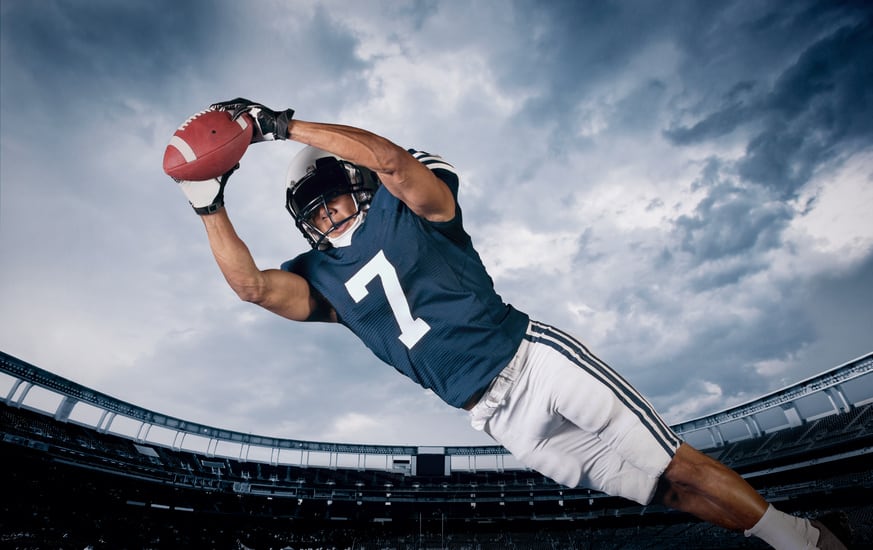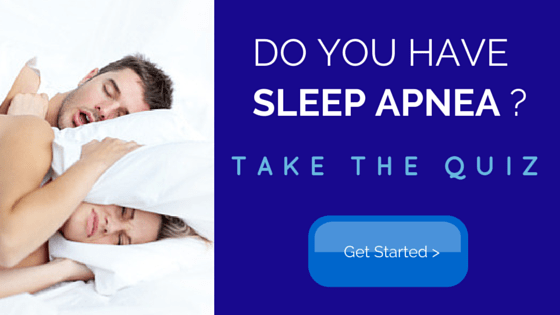NFL Players With Sleep Apnea Lose More Than Sleep

If the sheer number of individuals impacted by this condition isn’t startling enough, it may come as a shock that even some of the top professional athletes in the nation whose fitness and strength is flaunted on TV and admired on magazine covers, suffer from sleep apnea. In particular, NFL athletes are especially hard hit by this condition. A 2009 Mayo Clinic study of 167 former NFL players revealed that nearly 46% were suffering from sleep apnea and this statistic was even higher among those who were former linemen.
What’s perhaps most surprising of all is that there are plenty of current and former NFL players who don’t know that they are living with this serious disorder. Or, in other cases, players may have been diagnosed, but aren’t actively undergoing treatment, meaning that they are still exposed to all the serious health risks associated with sleep apnea. One reason for this is that many aren’t aware of the treatment options available to them other than the CPAP mask, a device that may be hard to tolerate and use on a nightly basis.
Why are so many cases of sleep apnea not diagnosed?
Despite the increasing awareness about sleep apnea in recent years, confusion still abounds. Specifically, there’s a lack of understanding about what symptoms are red flags of the disorder rather than occasionally unpleasant annoyances. Snoring, morning headaches and daytime drowsiness are all examples of sleep apnea symptoms that may seem harmless in isolation, but, in reality, can be warning signs that airflow is being obstructed during your sleep. Often times, this is the case with individuals who live alone, as snoring or repeated pauses in breathing may go undetected.
Why is sleep apnea prevalent among NFL players?
Sleep apnea is not new to the professional athlete community and many well-known celebrities including NBA star Shaquille O’Neal have gone public about their diagnosis to raise awareness. But while it is not a condition isolated to the NFL, NFL players are especially at risk for the disorder given the average body size of players, as weight and neck circumference are two factors that can increase the likelihood of developing OSA. Average body size has been trending upwards in the NFL over the past several decades too. In fact, the number of NFL athletes weighing more than 300 pounds has exponentially increased from just a handful of players in the 1970s to more than 500 players today. Considering these factors, it seems to add up that a 2003 article published by The New England Journal of Medicine reported that the risk for sleep apnea among NFL players was 4 to 5 times higher than the average population.
Sleep apnea is particularly common among linemen in the NFL, who tend to be heavier. The Mayo Clinic’s 2009 study of retired NFL players reported that of the former linemen in the group, 60% of them had sleep apnea, as compared to the 45% rate among the entire study group. The study also found that more linemen than non-linemen had high blood pressure, which may have been related to the prevalence of sleep apnea as well.
What effects can sleep apnea have?
Unfortunately for NFL players with sleep apnea, the condition causes them to lose much more than sleep. Inadequate rest and airway obstruction at night can spawn a multitude of other symptoms and problems that affect both quality of life and on-field performance.
Symptoms and related problems caused by sleep apnea include:
- Excessive daytime sleepiness
- Headaches
- Irritability
- Mood swings
- Depression
- Hormonal issues
- Relationship strain
- Drowsy driving
For NFL players with sleep apnea, these effects can have serious consequences on the field too, such as:
- Delayed reaction times
- Lack of energy
- Trouble concentrating
- Impaired memory
Beyond the immediate consequences, there’s also a host of long-term health risks that go along with sleep apnea if it is not properly treated. Some examples include irregular heartbeat, high blood pressure, an increased risk for dementia, heart attack, stroke and more. Not to mention, sleep apnea can even contribute to early death.
Who are some NFL players with sleep apnea?
Former NFL players Aaron Taylor and Rolf Benirshcke of the San Diego Chargers both have sleep apnea and have publicly come out to educate other NFL players about the problem. Percy Harvin, wide receiver for the Buffalo Bills, found out that his chronic migraines were due to having sleep apnea.
Perhaps the most well known case is NFL Hall of Famer and former Philadelphia Eagles defensive end, Reggie White, who died in 2004 of a fatal cardiac arrhythmia, which was attributed to sarcoidosis (a tissue inflammation disorder) and sleep apnea. At the time of his death, White’s CPAP device was sitting on his bedside table unused.
Despite the effectiveness of the CPAP mask at managing symptoms of sleep apnea by opening up the airway with a steady stream of pressurized air during sleep, compliance rates with the device are low – about half of CPAP users are non-compliant. Common grievances about CPAP include the loud nature of the machine, the uncomfortable and constricting feeling of wearing the mask and the side effects such as dry mouth, skin irritation and a runny nose.
Better Sleep With a Winning Alternative
While untreated sleep apnea can have grave consequences for NFL players both on and off the field, fortunately there are a number of treatment options to effectively manage the condition, if not eliminate symptoms entirely. Pro athletes with sleep apnea don’t have to settle for an uncomfortable CPAP mask or automatically resort to surgical treatments.
Oral appliance therapy is a CPAP alternative that is also a non-invasive sleep apnea treatment, yet it has much higher compliance rates than the CPAP mask. Oral appliances work by keeping the airway open during sleep through repositioning the tongue and/or jaw. They’re small, custom-made devices that can make a big difference and they’re worn just like a protective mouth guard on the football field – no mask, no noise and no clunky equipment. There are a few styles of devices available and the proper type will be selected based on the specific needs of each individual patient.
Sound like a winning alternative for better sleep? Schedule a consultation with a sleep specialist at eos dental sleep for sleep apnea treatment in Philadelphia and learn more about oral appliance therapy. In addition to offering oral appliance treatment, our practice also provides convenient at-home sleep testing to diagnose sleep apnea.
Remember: sleep apnea will continue to be a problem that affects a large group of NFL athletes. Better sleep and better performance begins with proper diagnosis and treatment.
Still not sure whether chronic snoring is a harmless habit or something more? Take our snore quiz to find out your level of risk for sleep apnea.

